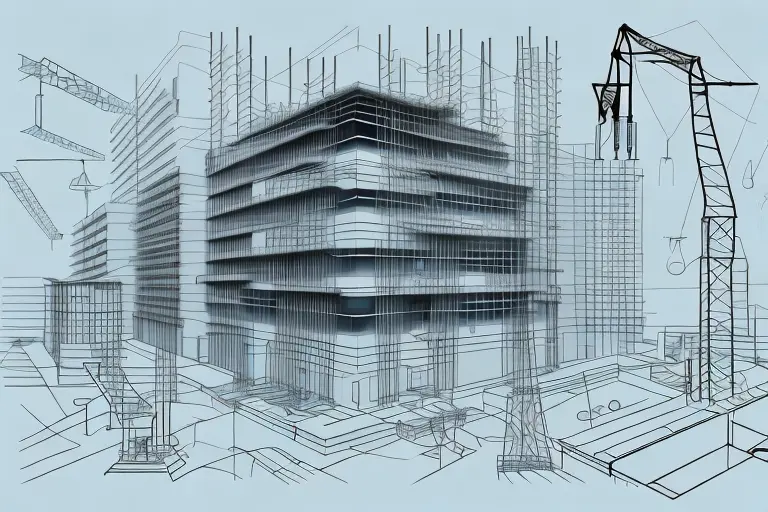I remember a project where the contractor spent two days on a simple reroute because a clearance detail was missing from the drawings. It was a tiny thing — a few centimetres — but it cost time, labour, and goodwill. That moment stuck with me because it showed how fragile workflows can be when models are shallow and data is scattered. High-precision BIM changes that. When models are accurate, up-to-date, and disciplined, coordination becomes less about firefighting and more about foresight.
Why precision matters in digital workflows
Buildings are densely packed systems now. Mechanical runs share the same air as structural depth and architectural detail. Miss one variable, and the consequence ripples. Precision in the model reduces guesswork, and guesswork is the real cost driver: it creates RFIs, site stoppages, and hurried fixes that erode margins and morale.
Make the model your working plan, not a static deliverable
From drawing set to living dataset
Treating a model as the authoritative reference changes behaviour. Teams stop asking “which drawing is latest?” and start asking, “what does the model say?” That single mental shift saves hours every week. It forces a discipline: update, publish, and notify. Done well, this process narrows the gap between design intent and construction reality.
BIM Modeling Services are often the backbone of that discipline. They do the tedious but crucial work: clean naming conventions, enforced attributes, and regular federated publishes. With those practices in place, the model becomes a trusted source for decisions rather than a source of debate.
Practical habits that increase fidelity
Keep it tight and phased
High fidelity doesn’t mean modeling everything, everywhere, all the time. It means modeling the right things to the right level for the phase. Early stages need massing, grids, and key routes. Later phases add fabrication-level detail where it matters. This staged fidelity avoids bloat and keeps iteration fast.
-
Maintain a minimal attribute set in early phases to ensure consistent exports and takeoffs.
-
Use parametric families only where they reduce repetitive work and reflect fabrication realities.
-
Freeze geometry for fabrication packages; don’t let aesthetic tweaks creep into shop drawings.
These are small rules, but they compound into big savings.
Collaboration patterns that actually work
Short, visual coordination beats long reports
Weekly, 30–45 minute model sprints do wonders. Show the model, call out three blockers, assign owners, and publish a one-line decision log. That brevity respects people’s time and forces clarity. It also creates an auditable decision trail that’s far more useful than reams of email.
When the model is treated this way, trades adopt it. They bring questions earlier, and the reviews become practical rather than theoretical.
Architectural BIM Modeling plays a role here by preserving intent — sightlines, thresholds, and finish tolerances — so coordination doesn’t erase the things that make spaces work for people. When architects embed those priorities as attributes, the technical trades can make choices that preserve the design, not undermine it.
Linking models to schedule and procurement
4D and procurement-aware models
A beam is geometry and a date. Link the element to schedule and procurement fields, and you see the ripple effects of a change: a different crane window, a shifted delivery, an altered cash flow. That clarity reframes debates. Suddenly, a design tweak is not only about aesthetics — it’s about time, money, and logistics.
BIM Modeling Services that include basic 4D tags and procurement metadata save late surprises. Simple fields — element ID, supplier code, lead time — unlock powerful coordination benefits without bloating the model.
Fabrication and prefabrication — precision pays off
Shop-ready models and prefabrication checks
The real test of a model’s fidelity is in the shop. Fabricators need clean families, validated tolerances, and transport-safe geometry. When models feed CNC and production lines directly, the shop becomes predictable and fast. That reduces on-site assembly time and lowers quality risk.
-
Validate transport and lift dimensions inside the model before fabricating modules.
-
Automate cut lists from the model to prevent manual transcription errors.
-
Include fabricator reviews in pre-fab milestones to catch practical issues early.
When prefabrication is driven by reliable models, construction becomes assembly rather than improvisation.
Handover and lifecycle value
The model as an operational tool
A model that dies at practical completion is a wasted asset. Tag equipment with maintenance data, warranty periods, and serial numbers so facilities teams inherit a working tool. It saves time long after the contractor’s truck has left.
Architectural BIM Modeling supports handovers by keeping user-critical information—access routes, maintenance clearances, finish warranties—visible and searchable in the as-built model. That makes the first year of operation far less chaotic.
Conclusion
High-precision BIM modeling is not about showing off detail. It’s about reducing the unknowns that cost time and money. With disciplined BIM Modeling Services and intentional Architectural BIM Modeling practices, teams turn their models into working plans, fabrication drivers, and operational assets. Do that, and the project runs smoother, the site is calmer, and the building behaves like it was always meant to.
FAQs
Q1: How soon should a project adopt BIM-based coordination?
Start in concept or schematic stages. Early coordination catches major conflicts while they’re cheap to fix and steers the project toward constructable solutions.
Q2: What level of detail is appropriate in early models?
Model to purpose: massing, grids, and major service routes early; add fabrication-level detail only when preparing shop packages or prefabrication runs.
Q3: How can architects ensure design intent survives coordination?
Embed priority attributes—sightlines, thresholds, exposed junctions—in model elements and require teams to acknowledge these in coordination log items.
Q4: What’s the quickest win for improving digital workflows?
Implement a weekly 30–45 minute federated model sprint with named owners, a short decision log, and enforced publish cadence. It yields immediate clarity and reduced rework.



